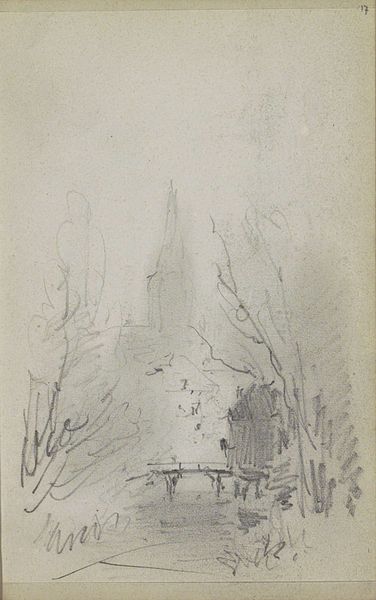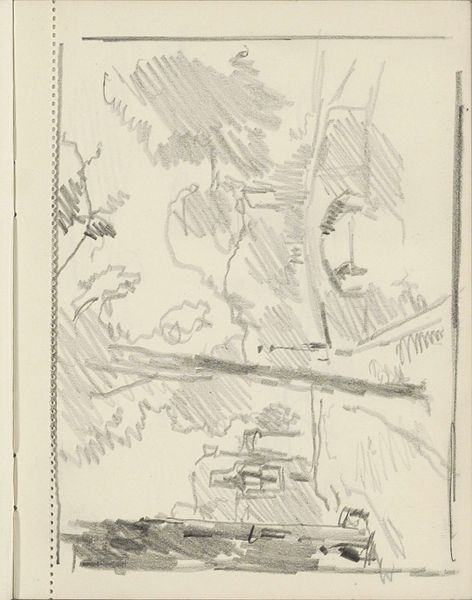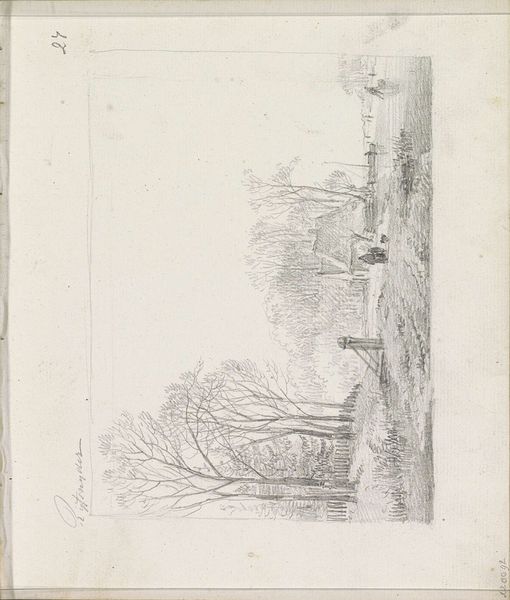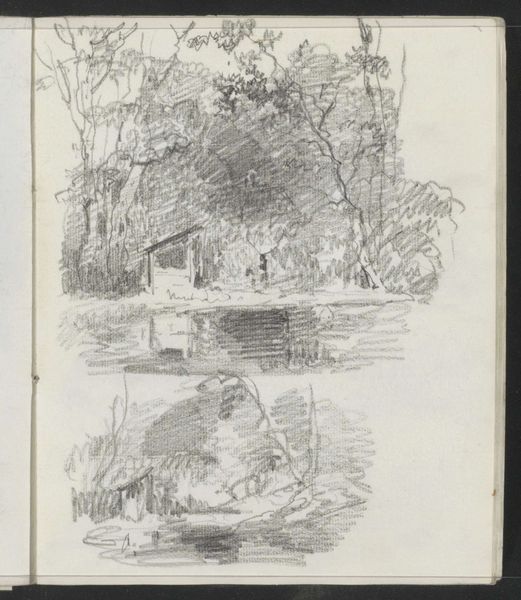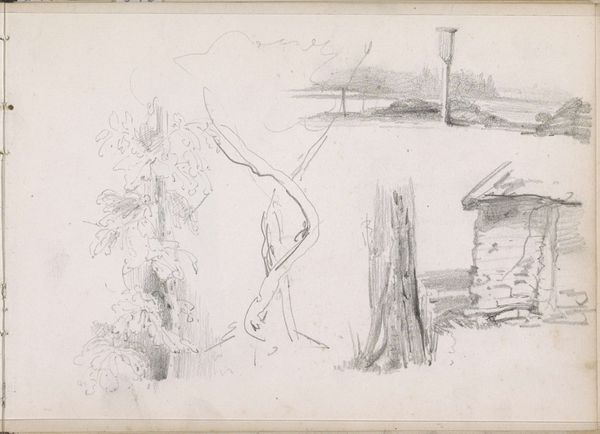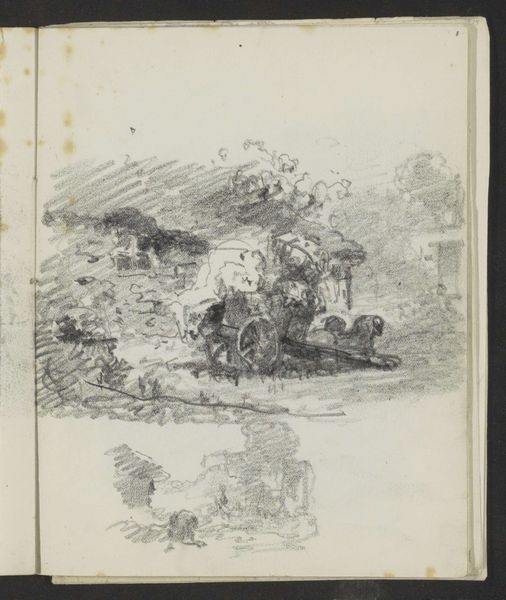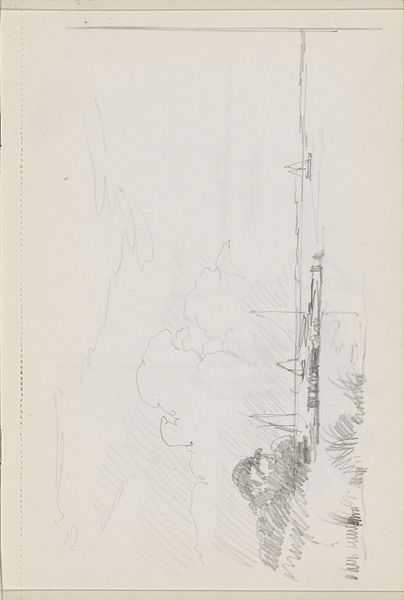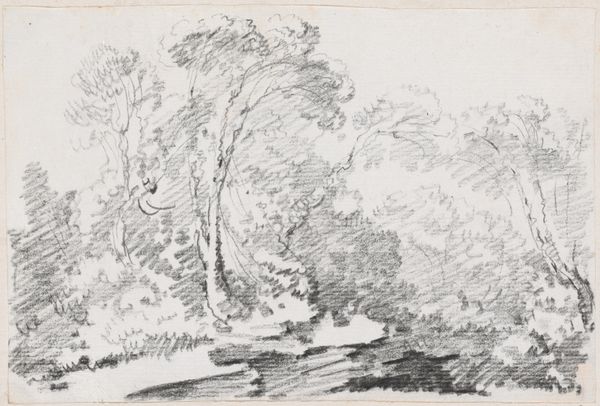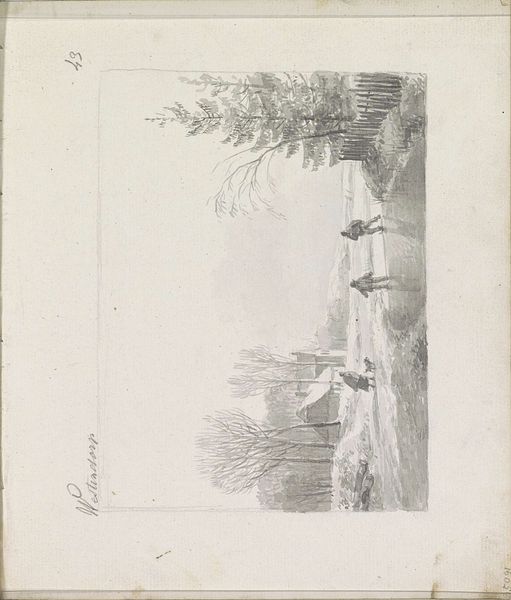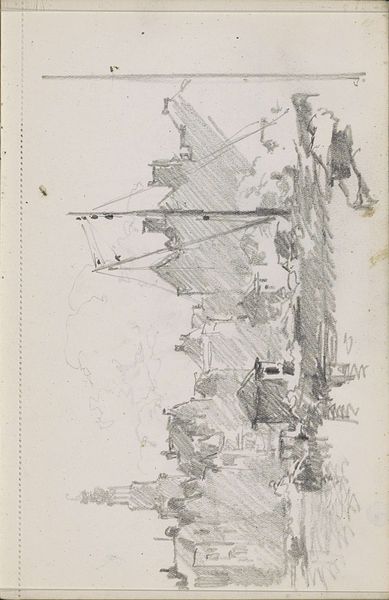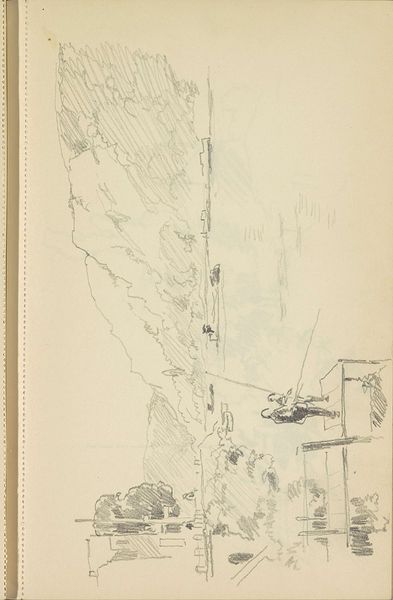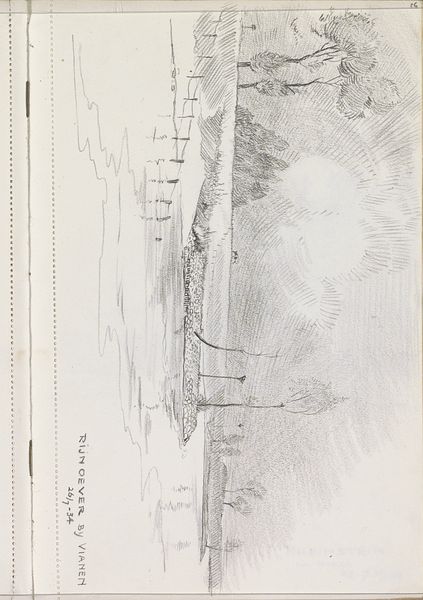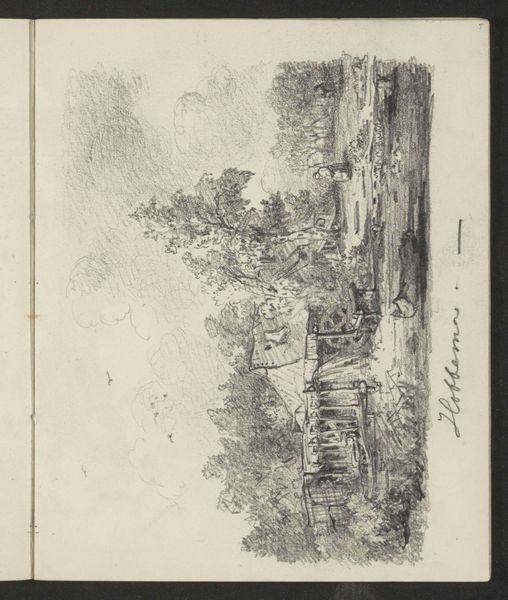
Copyright: Rijks Museum: Open Domain
Curator: What a beautifully evocative pencil sketch. Otto Verhagen created this piece, "Slot Rheinstein in de regen," sometime between 1934 and 1937. It’s an atmospheric rendering of the Rheinstein Castle during rainfall. Editor: My first impression is of a romantic, almost mournful scene. The soft pencil strokes really convey the dampness and gloom. There's a palpable sense of melancholy, which I find interesting. Curator: Absolutely. Castles themselves are heavy with cultural baggage, steeped in tales of power, defense, and often, oppression. The addition of the rain amplifies that feeling of a bygone era, of stories washing away over time. Rain often functions as a symbol of cleansing, renewal, and also of sorrow, its connection to the act of crying is key in understanding the feelings that emerge from the landscape. Editor: I agree. It raises questions about whose stories are remembered, and whose are lost. What's particularly compelling is the steamboat cutting through the water. It is positioned lower on the frame compared to the Castle on the hill. There is, in my view, an undeniable power dynamic: a collision of modernity encroaching on history, disrupting that supposed idyllic past that is usually invoked by the site of a Castle. Is this about reclaiming heritage, or transforming it into a tourist commodity, erasing historical injustice? Curator: An excellent point. Steamboats represented progress, the industrial revolution, so their presence challenges the idealized vision. Symbolically, it brings a very timely image to life. Verhagen skillfully weaves in elements of realism while maintaining a sense of romanticism that makes it accessible as a cultural icon. In the context of the rise of new political structures at the time, there's a visual commentary on the evolving landscape and social consciousness of the 1930s. Editor: This isn’t simply a nostalgic image, as one might assume initially. The way he juxtaposes historical monumentality with an almost brutally functional steamboat pushes the viewer to consider uncomfortable juxtapositions. It asks what the narrative of progress leaves behind. Thanks to his deliberate combination of imagery, Verhagen prompts essential reflection on the cultural currents running through that period. Curator: Indeed, by embedding these socio-historical layers, Verhagen transforms a simple landscape sketch into a profound cultural document that is deeply thought provoking, even today. Editor: This careful composition urges a nuanced examination of our shared history and its ongoing impact. It certainly left me with more to consider than I had initially imagined.
Comments
No comments
Be the first to comment and join the conversation on the ultimate creative platform.
